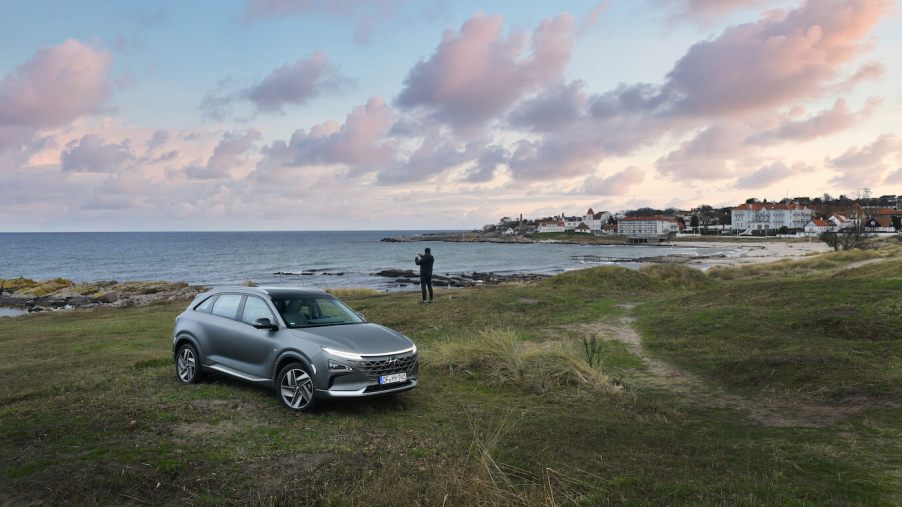
The Worst-Selling Hyundai Model Isn’t Much of a Surprise
Hyundai has established itself as a leading mainstream automaker with industry-leading warranty coverage, a diverse model range and powertrain options, and value across its lineup. Its standing has only been improved by its partnership with Kia. However, not every Hyundai is a hit among buyers. And it’s obvious why the worst-selling Hyundai model wears that unfortunate title.
Hyundai sales are (mostly) on the rise
Hyundai’s sales of late are rising with the general automotive landscape as the impacts of the COVID-19 pandemic have waned across the industry. Though the rising tide has lifted all ships, Hyundai is proving to be a particularly popular choice, according to sales stats from GoodCarBadCar.
Hyundai monthly sales were up a minor 1% in August compared to last year, but the brand’s annual sales so far this year are up a notable 13%, outpacing the annual growth of brands like Toyota, Ford and Lexus.
Annual sales through August for the Hyundai/Kia Automotive Group (1.1 million units sold) are only edging closer to that of Toyota (1.41 million) and Ford (1.37 million).
Leading the sales charge for Hyundai is the compact Tucson SUV, which has sold in impressive numbers through the first eight months of the year. Over 134,000 Tucson models have found new driveways this year, around 1,000 fewer Accords than Honda has sold. Though August was a rough month for Elantra sales, the subcompact sedan has moved nearly 98,000 units so far this year.
The Santa Fe midsize SUV (83,486 units sold), the three-row midsize Palisade (51,306), and subcompact Kona (49,825) are also proving to be popular among consumers so far into 2023.
The Hyundai Nexo is struggling to find buyers
While annual Hyundai sales are generally up across the board, the automaker’s Nexo SUV is struggling to attract any attention from buyers.
The Nexo’s paltry sales figures aren’t too shocking given it’s a hydrogen fuel cell electric vehicle (FCEV). The hydrogen-powered crossover is also exclusively sold in California due to the infrastructure related to FCEVs.
Just 18 Nexo models were sold in August, and year-over-year sales are down 51% for 2023 compared to last August with just 157 models sold so far this year.
Making its sales more auspicious, the Nexo isn’t the only FCEV on the block. Toyota has sold 2,472 of its FCEV Mirai models through August, outselling the Nexo by about 16 models to one. And a larger marketplace isn’t at pla —the Mirai is also exclusively sold in California.
The Nexo does have some advantages over its counterpart. For instance, the Mirai is limited to just 9.6 cubic feet of cargo space while the Nexo can accommodate nearly 30 cu-ft. The Nexo is also more spacious for passengers in both rows.
The Hyundai also has a long list of standard features, including a 12.3-inch touchscreen, wireless charging, adaptive cruise control, blind-spot monitoring and lane-keep assist. As expected from Hyundai, the Nexo’s warranty is class-leading.
Though power likely is a primary concern of those buying FCEVs, the Nexo and Mirai trade blows. The Nexo’s total output is 161 horsepower and 291 lb.-ft delivered exclusively to the front wheels. The Mirai delivers slightly more horsepower at 182 ponies but settles for 221 lb.-ft. of torque. More notably, the Nexo is rated for 354-380 miles of driving range before fill-ups, while the Mirai nets buyers 402 miles.
The issue may boil down to cost. Pricing for either 2024 model hasn’t been released, but the base 2023 Mirai carries an MSRP of $49,500, more than $10,000 less than the base Nexo’s $60,135 MSRP. The range-topping Mirai Limited retails for $66,000, more than the $63,585 of the top-tier Nexo.
Regardless of any advantages the Nexo has, it is clearly trailing the pack for sales in just a two-car field.



